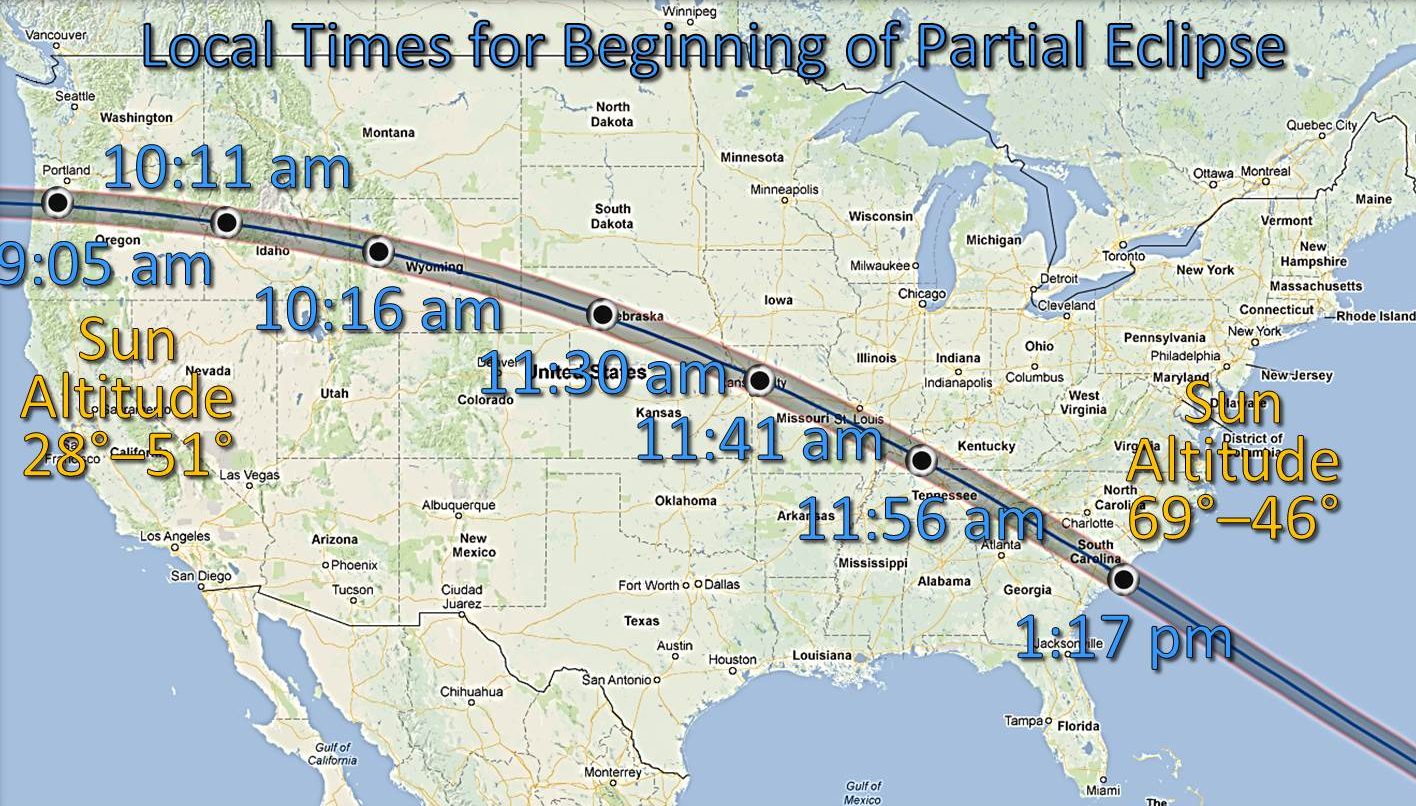The Great American Eclipse 2017

Did you miss the 26 February 2017 Annular Solar Eclipse!?
Don’t worry! Get your safety protection gear and mark your calendar for what will truly be considered The Great American Solar Eclipse.
It has been a long time waiting! If you miss this one, you will only need to wait 7 years for another, it’s true – but why wait?!
WARNING: When looking at any solar eclipse, NEVER look directly at the sun whenever ANY PART, no matter how small, is visible. It is dangerous to look at a partially eclipsed Sun but take your glasses off if the Sun is completely covered by the Moon.
August 21, 2017
Eclipse Day! Millions in the U.S. will have their eyes to the sky as they witness a total solar eclipse. The solar eclipse touches down in the north Pacific Ocean at 16:48:33 UT, at local sunrise. (At that spot, the Sun will actually rise while totally eclipsed).
This is a sight few people have seen, and from what we hear, it is quite uncanny.)
In U.S. the shadow first touches land in Oregon at 17:15:50 UT (at about 10:15 in the morning).
Then it cuts straight trough Idaho, Montana, Wyoming, Nebraska, Kansas, Iowa, Missouri, Illinois, Kentucky, Tennessee, Georgia, North Carolina and ending in South Carolina.
The eclipse will last around a minute and fifty seconds (varies based on your location).
What is a solar eclipse?
A solar eclipse occurs when the moon passes in a direct line between the Earth and the sun. The moon’s shadow travels over the Earth’s surface and blocks out the sun’s light as seen from Earth.
An annular eclipse occurs when the Sun and Moon are exactly in line, but the apparent size of the Moon is smaller than that of the Sun. Hence the Sun appears as a very bright ring surrounding the dark disk of the Moon.
Tracing the 2017 Solar Eclipse
Thanks to elevation data of the moon from NASA’s Lunar Reconnaissance Orbiter, or LRO, coupled with detailed NASA topography data of Earth, we have the most accurate maps of the path of totality for any eclipse to date.